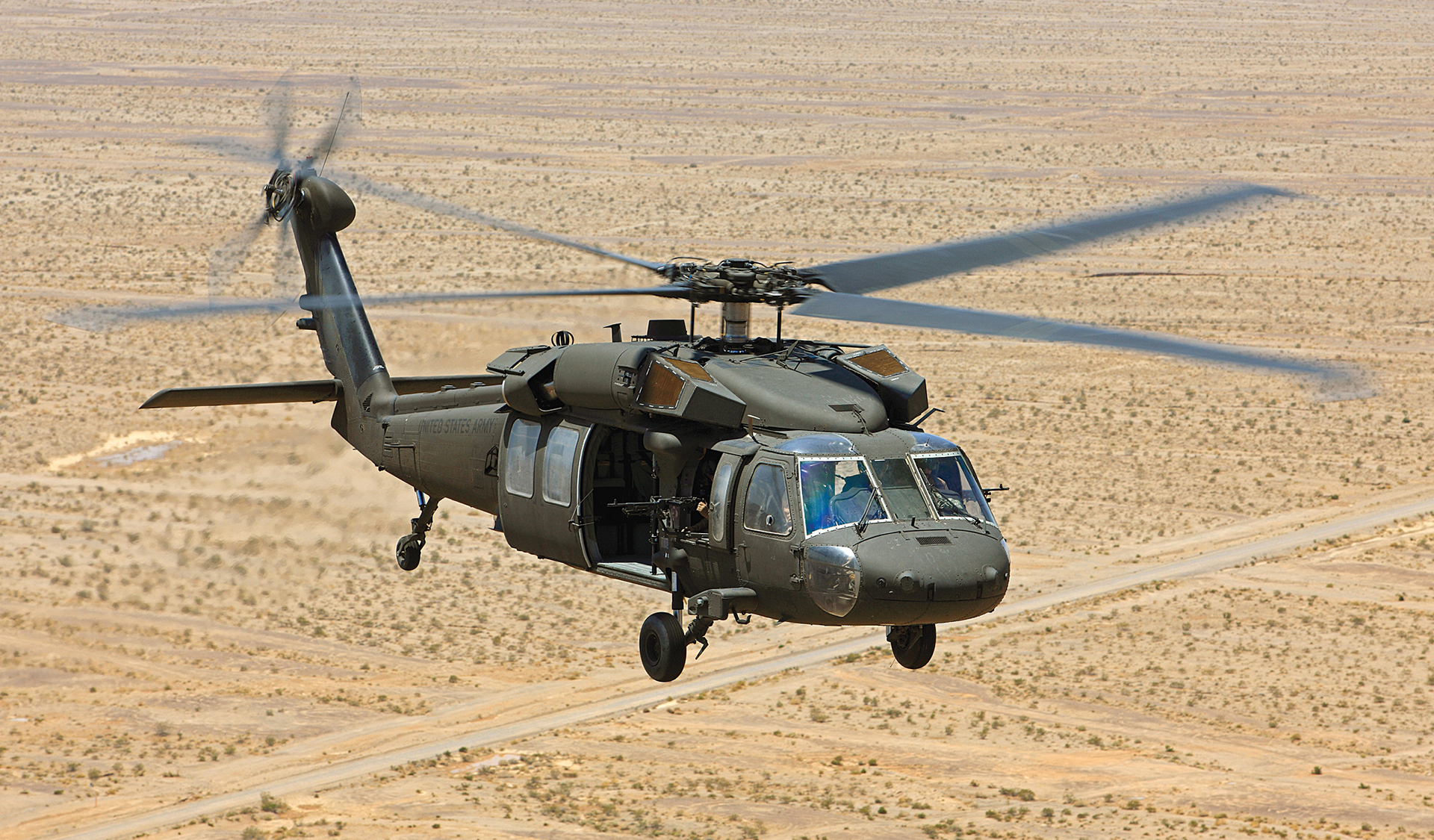Understanding the Mechanics and Design Behind Uh 60 Helicopters
The UH-60 helicopter, frequently referred to as the Black Hawk, stands as a peak of modern rotorcraft modern technology, embodying a mix of robust design and intricate auto mechanics. From its inception to its present iterations, the development of this airplane showcases a fusion of advancement and practicality. As we peel back the layers of the UH-60's layout, a globe of intricate systems and careful design emerges. Understanding the technicians and engineering behind this flexible airplane unveils a realm where accuracy fulfills power, and where each component plays a vital duty in achieving trip.
Background of UH-60 Helicopters
The history of UH-60 helicopters traces back to the late 1970s when the United States Army looked for a sophisticated and versatile energy helicopter to replace its aging fleet. In reaction to this demand, the Sikorsky Airplane Company developed the UH-60 Black Hawk helicopter. Introduced in 1979, the UH-60 rapidly ended up being a staple in armed forces operations as a result of its excellent capabilities.
The UH-60 was designed to master a range of goals, including army transportation, medical discharge, digital warfare, and unique procedures. Its capability to adjust to different functions made it an important property to the united state Military and various other military forces worldwide
Over the years, the UH-60 platform has gone through numerous upgrades and variants to boost its efficiency and maintain rate with developing objective demands. These helicopters have seen considerable solution in problems such as the Gulf Battle, Afghanistan, and Iraq, showcasing their integrity and convenience in varied functional atmospheres. The UH-60's rich history is a testament to its long-lasting heritage as a top energy helicopter.

Engine and Power Systems
Utilizing sophisticated propulsion innovation, UH-60 helicopters are geared up with innovative engine and power systems to make sure optimal performance and integrity in a variety of functional scenarios. The UH-60, frequently called the Black Hawk, is powered by two General Electric T700-GE-701D engines, each efficient in supplying up to 1,940 shaft horsepower. These turboshaft engines offer the necessary thrust for the helicopter to bring out its goals effectively, including troop transport, medical evacuation, and combat support.

Blades System and The Rules Of Aerodynamics
Just how do the rotor system and read the rules of aerodynamics of UH-60 helicopters contribute to their operational performance and flight abilities? The rotor system of the UH-60 helicopter plays a vital role in supplying lift and propulsion.
The rules of site aerodynamics likewise play a vital role in the efficiency of UH-60 helicopters. The structured fuselage and rotor blade layout reduce drag, enabling the helicopter to attain higher speeds and much better gas efficiency. The aerodynamic style of the UH-60 additionally adds to its capability to run in varied ecological conditions, including high elevations and warm temperature levels.
Avionics and Flight Control Solution

In its detailed control with the blades system and aerodynamics of UH-60 helicopters, the avionics and trip control systems create a critical network of innovations shaping the aircraft's functional abilities. In the UH-60, these systems include electronic display screens, communication radios, GPS navigating, weather condition radar, and autopilot systems.
The trip control systems of the UH-60 are liable for equating the pilot's inputs into the ideal modifications to the rotor system, making certain steady flight and ability to move. These systems include hydraulic actuators, servos, and computer systems that collaborate to manage the tail and major rotors, as well as various other flight control surface areas. By precisely handling the helicopter's flight characteristics, these systems enable pilots to execute a broad array of objectives, from transportation and search-and-rescue to fight operations, with accuracy and confidence.
Duty and Applications in Aviation
Avionics systems in UH-60 helicopters include a variety of electronic systems that aid in navigation, communication, surveillance, and regulating numerous airplane functions. These systems include electronic display screens, auto-pilot systems, communication radios, GPS navigating equipment, and weather condition radar. Additionally, these systems include safety and security attributes such as auto-pilot settings, terrain awareness advising systems, and security augmentation systems to enhance the total security and operational capacities of the UH-60 helicopters in numerous objectives, including army transport, clinical emptying, search and rescue, and aerial firefighting.
Verdict
To conclude, the UH-60 helicopter is a flexible airplane with a rich background and advanced engineering. Its engine and power systems, blades system, aerodynamics, avionics, and trip control systems all collaborate to make it a trustworthy and effective device. The UH-60's role and applications in aeronautics are huge, varying from armed forces procedures to browse and save missions. Its proceeded development and use show its significance in the area of aviation (uh 60).
In its detailed coordination with the rotor system and the rules of aerodynamics of UH-60 helicopters, the avionics and trip control systems form a click here for info vital network of technologies shaping the aircraft's functional capacities.The trip control systems of the UH-60 are responsible for equating the pilot's inputs into the proper changes to the blades system, ensuring steady flight and ability to move. Avionics systems in UH-60 helicopters incorporate an array of electronic systems that aid in navigating, communication, tracking, and managing different airplane features. In addition, these systems incorporate safety functions such as autopilot modes, terrain understanding alerting systems, and stability augmentation systems to improve the general security and operational capabilities of the UH-60 helicopters in various missions, including army transportation, clinical discharge, search and rescue, and airborne firefighting.
Its engine and power systems, blades system, aerodynamics, avionics, and flight control systems all work with each other to make it a efficient and dependable device.